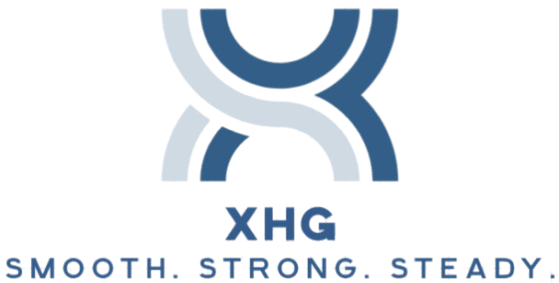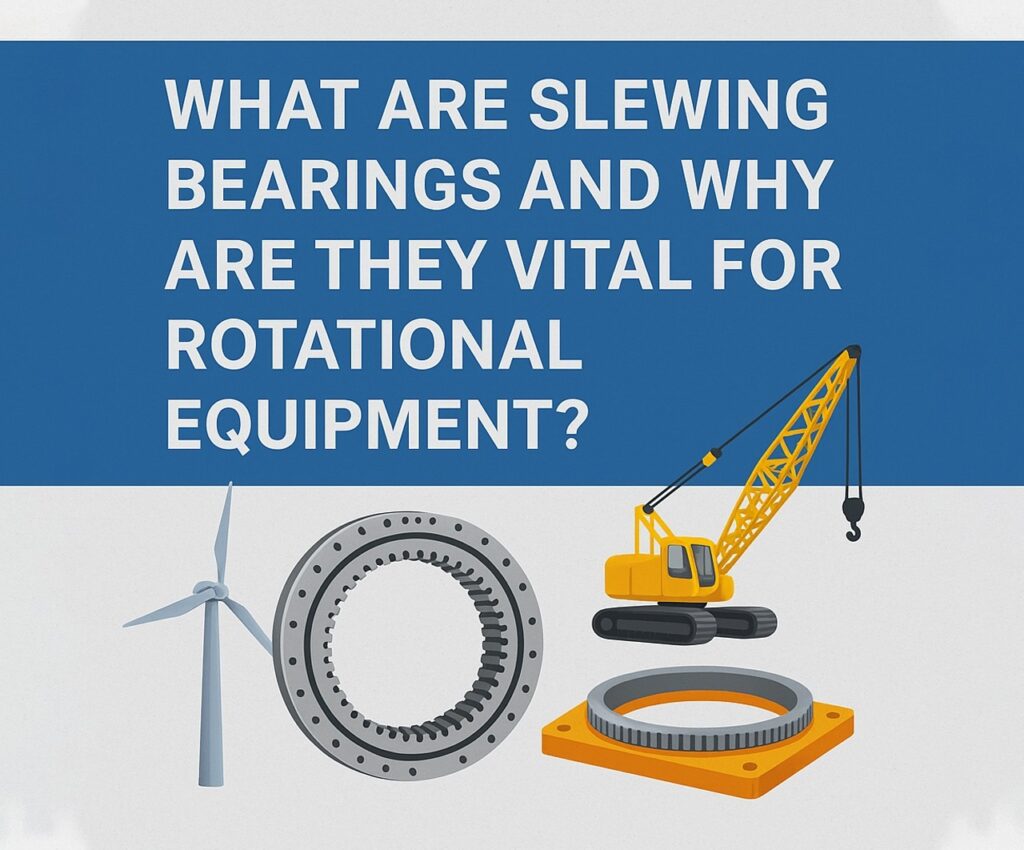In the realm of heavy-duty machinery and precision engineering, slewing bearings, the slewing ring, and the broader concept of slewing play a central role in enabling smooth, powerful, and controlled rotational motion. From towering cranes and wind turbines to medical imaging equipment and military radar systems, these components are often the backbone of rotary movement. Their importance cannot be overstated: when it comes to handling large axial, radial, and moment loads in a single component, slewing bearings are unmatched. Know More
What Is a Slewing Bearing?
At its core, a slewing bearing is a large, specialized bearing that facilitates rotational movement between two structures. It often includes gear teeth (internal or external), mounting holes, and lubrication channels. The slewing ring is the rotating interface that allows heavy machinery to spin with stability and precision.
Slewing bearings are designed to carry:
- Axial loads (vertical force)
- Radial loads (horizontal force)
- Tilting moment loads (torque that causes tipping)
The term slewing itself refers to the act of rotating around an axis, particularly in a horizontal or angular fashion.
Key Types of Slewing Bearings
There are several variations of slewing bearings, each tailored to specific applications:
- Single-row ball slewing ring
- Simple, cost-effective, suitable for light-to-medium loads.
- Double-row ball slewing ring
- Handles higher loads and better accommodates axial and radial forces.
- Three-row roller slewing bearing
- Highest load capacity; often used in massive cranes and excavators.
- Crossed roller slewing ring
- High precision and stiffness, ideal for robotics and medical devices.
Each configuration offers a trade-off between load capacity, size, precision, and cost.
Why Slewing Bearings Are Vital
Modern industries are more reliant than ever on large-scale and precision rotary motion. Without robust slewing bearings, equipment would suffer from:
- Uncontrolled movement
- Structural failure under load
- Reduced service life
- Inaccurate positioning
By integrating a single slewing ring that supports all directional forces, engineers reduce component count, simplify assembly, and increase mechanical reliability. That’s why slewing mechanisms are a go-to solution in critical systems.
Creative and Emerging Applications
While cranes and excavators are obvious candidates, here are some innovative ways slewing bearings are making a difference:
1. Wind Turbines
Modern turbines use slewing rings in both the yaw and pitch systems. These allow the nacelle to rotate toward the wind and the blades to adjust their angle for maximum efficiency. Without reliable slewing, energy generation would be compromised.
2. Solar Tracking Systems
Utility-scale solar farms employ slewing bearings to rotate solar panels throughout the day. Dual-axis systems rely on these to maintain optimal sun exposure, increasing efficiency by over 25%.
3. Cinematography and Live Events
Precision slewing rings allow for smooth camera gimbals and rotating platforms in concerts, movie sets, and sporting events.
4. Medical Imaging Equipment
CT scanners and surgical robots use high-precision slewing bearings for quiet, reliable, and exact motion, ensuring patient safety and image clarity.
Engineering Advantages of Slewing Bearings
Why are these components replacing more complex bearing assemblies? Let’s break it down:
- Multi-load handling: One slewing ring can support axial, radial, and moment loads simultaneously.
- Compact design: Reduces space and weight.
- Ease of installation: Typically mounted with bolts to two flat surfaces.
- Integrated gearing: No need for separate gear mechanisms.
- Customizable: Available in various materials, coatings, and configurations.
This combination of features makes slewing bearings a favorite in both rugged outdoor machinery and delicate, high-tech systems.
Smart Technology and Future Trends
Innovation in slewing technology is accelerating. Here’s what to expect in the next generation:
1. Condition Monitoring
Embedded sensors in slewing rings now monitor vibration, temperature, and load. This data feeds into predictive maintenance systems to reduce downtime and extend service life.
2. Self-Lubricating Systems
Advanced polymers and sealed grease pathways are helping slewing bearings operate maintenance-free in remote locations.
3. High-Speed Slewing
Applications like satellite positioning and autonomous vehicles are demanding faster rotation with tighter tolerances. Manufacturers are responding with low-friction, high-precision slewing bearings.
4. Green Manufacturing
Sustainability in slewing component production is becoming a priority, with recyclable materials, eco-friendly coatings, and reduced waste processes.
Case Study: Maritime Crane Reliability
A global shipping company was experiencing frequent breakdowns in its cargo cranes. By upgrading to three-row roller slewing bearings, downtime was cut by 60%, and lifting capacity increased by 20%. The new slewing ring design included corrosion-resistant coatings and onboard grease reservoirs, ideal for harsh marine environments.
Maintenance and Best Practices
To get the most out of your slewing bearings, follow these guidelines:
- Regular Inspection: Check for unusual wear, noise, or backlash.
- Lubrication Schedule: Stick to OEM guidelines or opt for automated systems.
- Bolt Torque Check: Loose bolts can cause raceway deformation.
- Clean Environment: Debris and contaminants accelerate bearing failure.
Even the toughest slewing ring can fail if maintenance is ignored.
Common Mistakes to Avoid
- Overloading: Exceeding the design load can permanently deform the bearing.
- Misalignment: Poor installation leads to uneven wear.
- Under-lubrication: This is a leading cause of slewing bearing failure.
- Ignoring Gear Wear: Integrated gear teeth also need inspection and maintenance.
Design Considerations for Engineers
When specifying a slewing ring, factor in:
- Load type and magnitude
- Rotation speed and duty cycle
- Environmental exposure (salt, dust, temperature)
- Space and weight constraints
- Lubrication accessibility
Custom solutions are often the best approach for high-stakes applications.
Final Thoughts: The Silent Power of Rotation
Slewing bearings, the slewing ring, and the entire mechanism of slewing are vital to many of today’s most important machines and structures. Without them, cranes wouldn’t lift, turbines wouldn’t spin, and high-tech medical equipment wouldn’t function. Their ability to support massive loads while enabling smooth, controlled rotation is not just impressive—it’s essential.
As innovation pushes equipment to rotate faster, longer, and smarter, the role of slewing bearings will only grow. Choosing the right slewing ring could mean the difference between consistent performance and catastrophic failure.
If you’re working on any system involving rotation, pay close attention to your slewing solution. It’s more than just a bearing—it’s the pivot point of performance.

